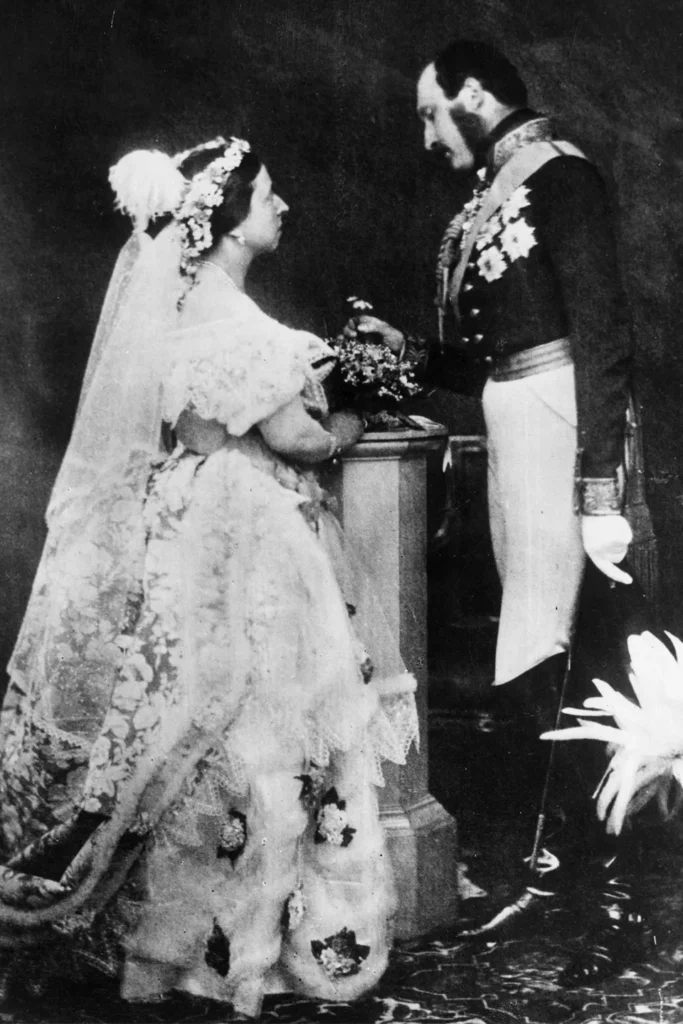Bridal Veil Pros and Cons [Should You Wear One on Your Wedding Day?]
You’ve picked the dress, the shoes, and maybe even the earrings that sparkle just right. But there’s one detail that still lingers in your mind – the veil. Should you wear one or skip it altogether?
At Plannersy, we know this tiny piece of tulle carries more than just fabric – it carries centuries of tradition, symbolism, and emotion.
But modern brides are redefining what it means to walk down the aisle, and your veil (or lack of one) is part of that personal story.
Let’s help you decide.
A Quick History: Why Do Brides Wear Veils?
Before diving into the pros and cons, it helps to understand why veils became a wedding staple in the first place.
Traditionally, veils symbolized purity, modesty, and mystery – especially in Christian ceremonies. In ancient Rome, brides wore red veils to ward off evil spirits. Later, Queen Victoria’s white veil popularized the style we know today.

And today, veils are no longer about symbolism – they’re about style, drama, and personal choice.
The Pros of Wearing a Bridal Veil
1. It Elevates the Bridal Look Instantly & Creates that “Bridal” Moment
A veil adds that “bridal magic” that unmistakable transformation moment. Whether it’s a dramatic cathedral veil or a short fingertip one, it completes the look in a way nothing else does.
A veil instantly distinguishes a bride from everyone else in the room. More than an accessory, it’s that “this is really happening” feeling when you see yourself in the mirror.
Plannersy Tip: Try your veil with your hairstyle and earrings before finalizing – this ensures balance and proportion.
2. Stunning Photos & Cinematic Moments – It Enhances the Photograph Composition
Veils create movement – that soft, floating effect photographers and videographers love. Think of the wind catching it, or your partner lifting it before the kiss – timeless and emotional.
A veil adds depth, layering, and softness to your wedding portraits. Your photographers can use it to frame you creatively – wrapping it around both partners or letting it flutter in the wind for a cinematic effect.
3. Adds Tradition & Sentimentality: A Symbol of Tradition and Continuity
For some brides, a veil connects generations – especially if it’s a family heirloom or symbolic of faith. Wearing your mother’s or grandmother’s veil adds a deeply emotional layer to your wedding day. So yes, many brides wear veils to honor family customs, faith, or to incorporate “something borrowed.”
It’s a quiet nod to tradition in an otherwise modern celebration.
4. Perfect for the Aisle Entrance Reveal
If you love that cinematic “reveal moment,” the veil sets it up perfectly. The slow walk, the anticipation, and then the lift – it’s powerful and beautiful.
5. Customizable to Any Aesthetic
Modern veils aren’t one-style-fits-all – lace, pearl-embellished, glitter tulle, minimalist silk… each one tells a different story. You can make it vintage, glam, romantic, or editorial depending on your dress and mood.
6. Offers Emotional Storytelling
When your partner lifts the veil, it’s an intimate, cinematic moment that captures the transition from anticipation to connection – one of those timeless, emotional highlights.
7. Adds Modesty Without Compromise
For brides wanting a balance between elegance and modesty (especially in church or temple ceremonies), a veil adds coverage gracefully without altering the dress.
8. Ideal for “Two Looks” in One Day
Wearing a veil for the ceremony and removing it for the reception lets you transition your look effortlessly – from traditional to modern in seconds.
9. A Timeless Keepsake
Your veil can be preserved, framed, or repurposed into a baby christening gown or memory quilt – carrying forward your love story in a meaningful way.
The Cons of Wearing a Bridal Veil
1. It Can Feel Restrictive or Uncomfortable
Let’s be real – veils can tug, snag, or shift during hugs and dances. If your celebration involves lots of movement (outdoor or beach weddings especially), you might find it slightly bothersome.
Especially cathedral-length veils – they look stunning but can feel cumbersome, particularly outdoors or during long ceremonies.
2. Added Cost & Care – Needs extra attention
Veils range from $100 to over $1,000 depending on detailing and designer. They also require delicate handling and can wrinkle easily if not packed properly.
It’s easy to trip over or tug accidentally during hugs, dances, or even seating transitions. A second shooter or planner often needs to assist in adjusting it.
3. May Not Suit Every Venue or Vibe [And can overshadow the Dress]
For minimalist, modern, or boho brides, a veil can feel too “traditional.” At outdoor or windy venues, it can get caught or tangled – making it impractical.
If your gown already has intricate details -a dramatic train, heavy beadwork, or a statement neckline – a veil might compete visually instead of complementing it.
4. Easy to Misplace or Damage
Between outfit changes, photo sessions, and dancing, veils are easy to forget or tear. If you’re sentimental about keeping it as a keepsake, factor in professional preservation costs.
5. Requires a Secure Hairstyle
You’ll need a stable updo or pinned-back style for the veil to anchor well. If you envisioned loose curls, that might not work as seamlessly.
6. Can Delay the Getting-Ready Timeline
Attaching, adjusting, and securing the veil takes time – and once it’s on, you’ll need help moving around carefully until the ceremony.
7. May Feel Outdated for Minimalist Brides
Some modern brides prefer a sleek, fuss-free look without traditional symbols – for them, the veil may feel unnecessary or performative.
Alternatives to the Traditional Veil
If you love the bridal essence but not the fuss, consider these veil alternatives:
- Capes: Flow beautifully and feel regal without covering your face.
- Hair vines or combs: Add sparkle and elegance without length.
- Flower crowns: Perfect for boho or garden weddings.
- Hats or fascinators: Ideal for vintage or city-style brides.
Plannersy Tip: Try different options with your dress silhouette. For example, a minimalist gown pairs beautifully with a statement cape.
Veil Types & What They Say About Your Style
| Veil Type | Length/Style | Best For |
|---|---|---|
| Birdcage | Short, covers part of face | Retro, city-chic weddings |
| Fingertip | Ends at fingertips | Classic elegance, versatile |
| Chapel | Flows just beyond the dress | Traditional ceremonies |
| Cathedral | Dramatic and long | Grand indoor venues, regal style |
| Juliet Cap | Vintage romantic | Boho or outdoor weddings |
How to Decide – Veil or No Veil?
Ask yourself these questions before saying yes (or no) to the veil:
- Does it align with your personal style and comfort?
- Does your dress already make a statement on its own?
- What’s your venue vibe – traditional, modern, or outdoorsy?
- How much movement and dancing will you do?
- Will it hold sentimental value for you or your family?
Plannersy Insights
There’s no right or wrong answer – only what feels true to you. Some brides love the symbolism and photos, while others feel freer without it. Either way, your choice defines your kind of beautiful.
Plannersy’s Take – The Veil Doesn’t Make the Bride, You Do
A veil can elevate your look, but it doesn’t define your worth or beauty. What matters most is how you feel when you walk down that aisle – confident, radiant, and completely yourself.
Whether you wear a cathedral-length veil or none at all, remember: you are the moment.
Plannersy celebrates every kind of bride – traditional, modern, or somewhere beautifully in between.

![Bridal Veil Pros and Cons [Should You Wear One on Your Wedding Day?]](https://plannersy.com/wp-content/uploads/2025/10/Plannersy-Wedding-Veil-or-No-Veil-for-Bride-900x500.jpg)

